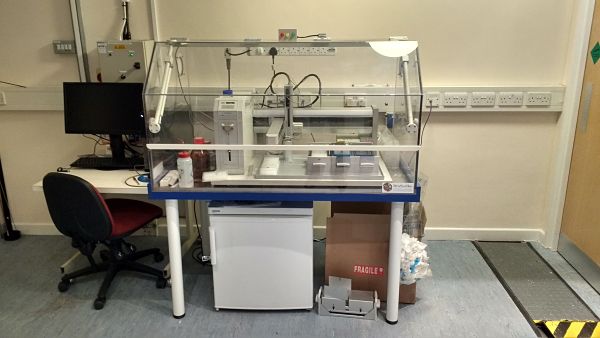About NMR and the facility
Nuclear Magnetic Resonance (NMR) has evolved as one of the main techniques to obtain structural information at atomic resolution in solution on small molecules and biomolecules such as peptides and proteins. Solution NMR is an indispensable enabling technology for determining not only structures of such molecules but also their interactions, even weak and transient, as well as for characterizing functional processes in solution and also directly in living cells.
The power of NMR resides in linking structural, dynamic, kinetic and thermodynamic information so as to make it a technique of choice in cutting-edge research in medicine and biology. Solution NMR also offers the possibilities to study dynamic processes at atomic resolution and over a very wide range of timescales, from picoseconds to hours, including folding mechanisms and transient formation of complexes.
The facility houses a Bruker Avance III HD 700 MHz Ascend magnet equipped with a 1.7mm inverse triple resonance micro-cyroprobe with dedicated 1H, 13C, 15N and 2H channels for biomolecular applications. The instrument is located in the NMR facility in the School of Chemistry, alongside the 600 MHz biological NMR spectrometer.
In addition, the facility also includes a liquid handling robot and temperature controlled 96-well autosampler. These facilitate high-throughput NMR using extremely small quantities (micrograms to nanograms) of sample. This will support natural product research, high throughput screening of protein-protein or protein-ligand interactions, and protein structural biology. The high field coupled with the extremely sensitive cryoprobe will allow you to tackle previously untenable problems.
The instrument is prioritised for the BrisSynBio users and there is an allocation of time for industrial partners.


Equipment booking
BrisSynBio users are welcome to book our equipment.
Please contact Christopher Williams (C.Williams@bristol.ac.uk) for more information about this equipment, or advice a specific project/sample.